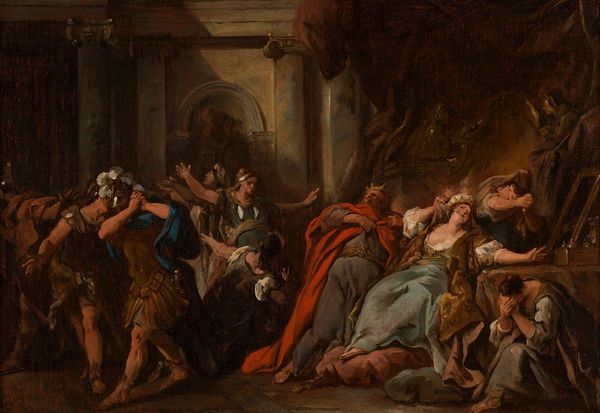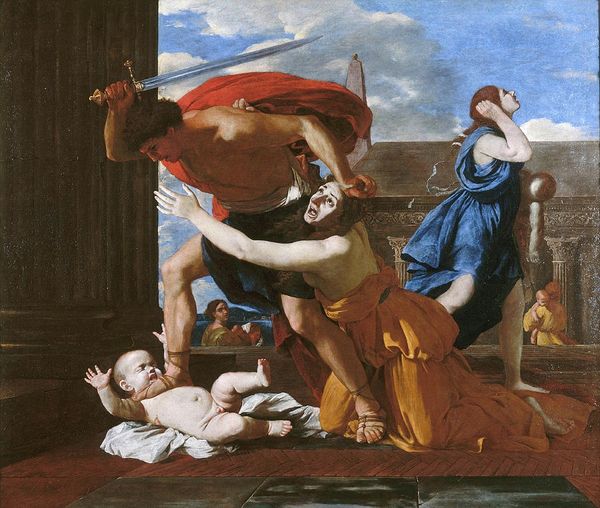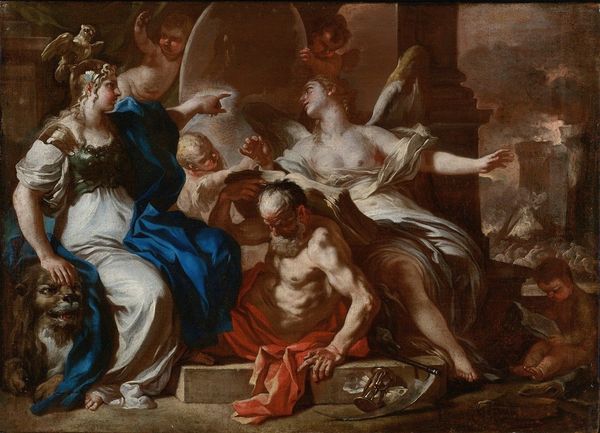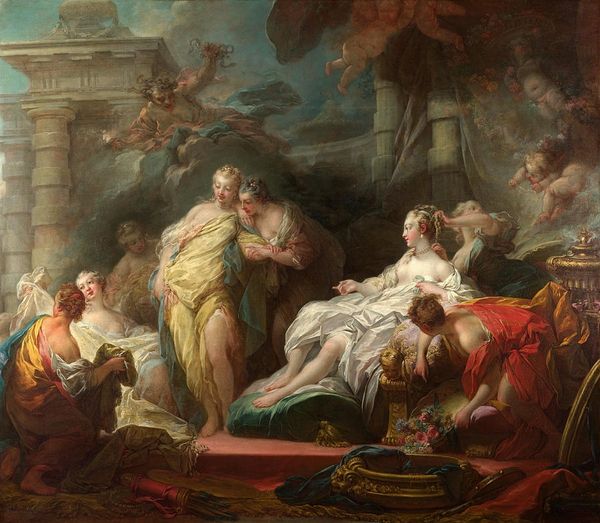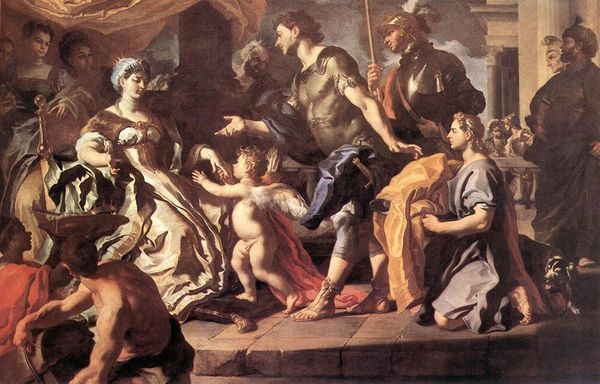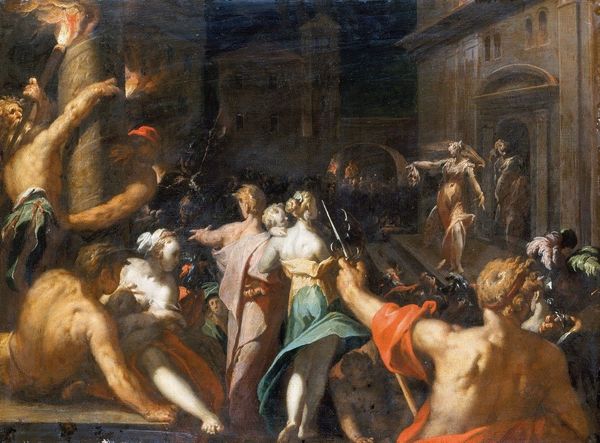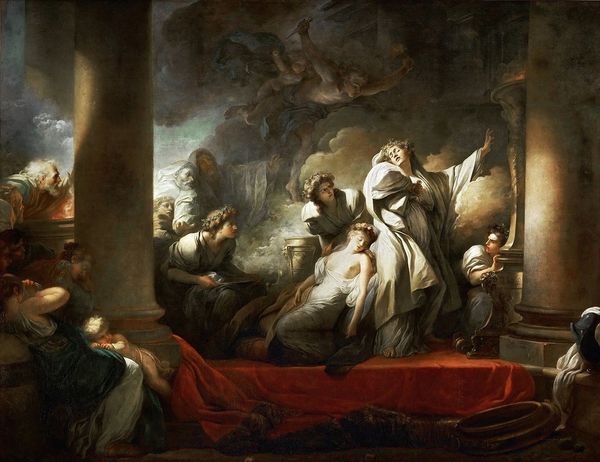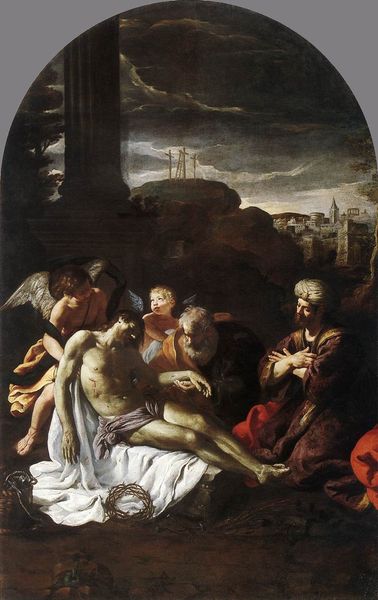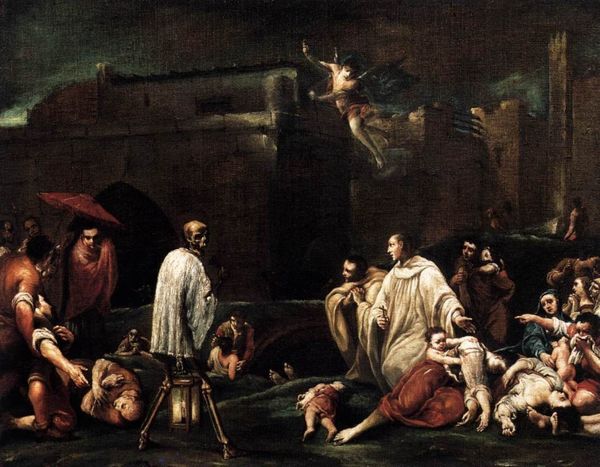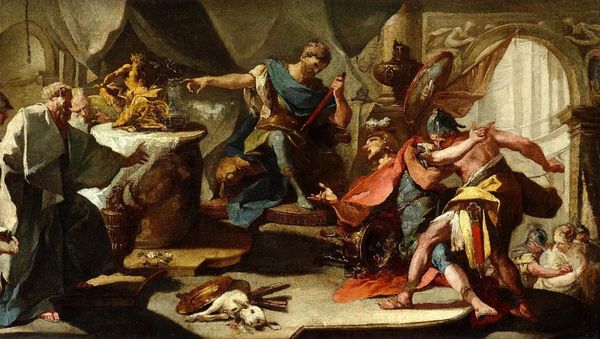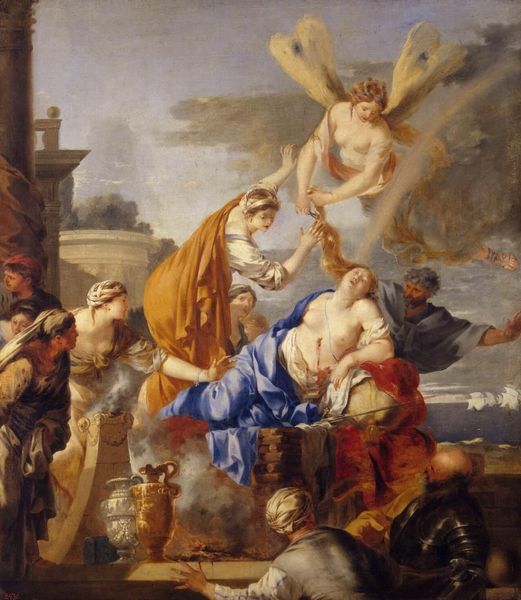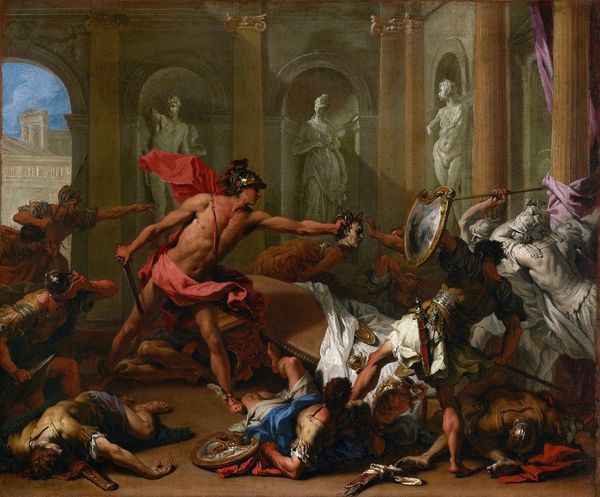
painting, oil-paint
#
figurative
#
allegory
#
baroque
#
painting
#
oil-paint
#
figuration
#
oil painting
#
history-painting
#
realism
#
rococo
Copyright: Public Domain: Artvee
Editor: Here we have "Die Großmut Des Scipio," an oil painting by Hans Canon, dating from between 1730 and 1750. The scene feels both theatrical and morally weighty, filled with figures rendered in rich, flowing fabrics. How do you interpret this work, especially in its portrayal of power dynamics? Curator: This piece invites us to consider the narratives around leadership and virtue constructed within its historical context. Looking at Scipio's gesture, surrounded by symbols of conquest and wealth, it prompts critical questions. Who benefits from this magnanimity? Is it a genuine act of altruism or a performance intended to solidify power? What social expectations around masculinity and leadership are being reinforced here? Editor: I see that. So you are asking if the "greatness" presented in the title is ironically self-serving? Curator: Precisely! Baroque and Rococo art often masked complex social realities behind idealized portrayals. We must deconstruct the visual rhetoric of the time to uncover the latent ideologies it served. Consider how the female figure is positioned – is she a symbol of peace, a prize, or perhaps even a silent commentator on Scipio's actions? These visual cues tell us much about gendered power. Editor: That's a powerful perspective. I hadn't thought about the painting as actively participating in the rhetoric of power and gender. Curator: By examining these historical depictions through a contemporary lens, we can question the ongoing legacies of colonialism, patriarchy, and class structures embedded within them. Editor: It's fascinating to consider art's role in shaping and reflecting those values. Curator: Indeed. Engaging with historical artworks like this becomes an exercise in understanding how dominant narratives are constructed and, crucially, how they can be challenged. Editor: Thanks, I will have to spend a lot more time researching and studying the Rococo.
Comments
No comments
Be the first to comment and join the conversation on the ultimate creative platform.
